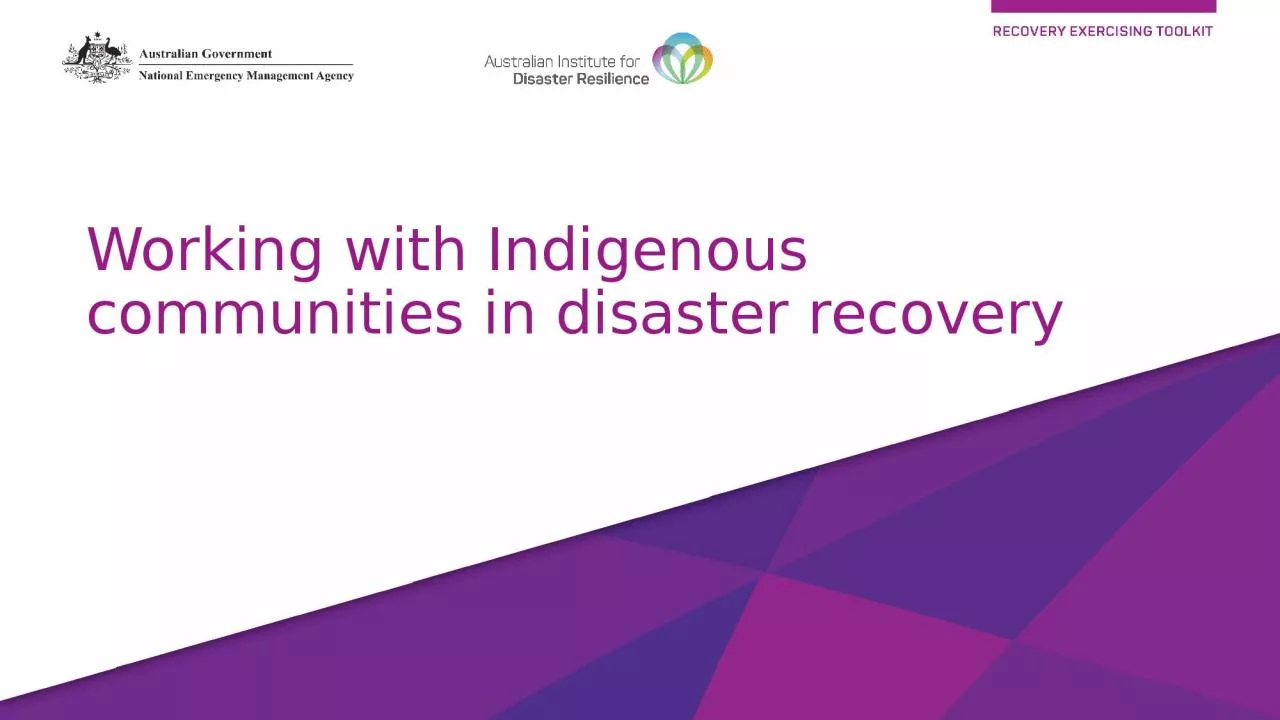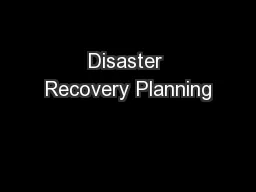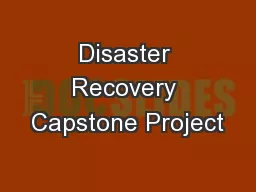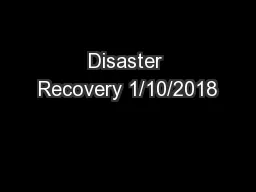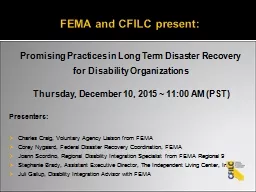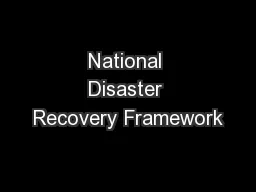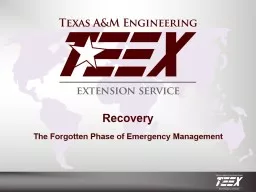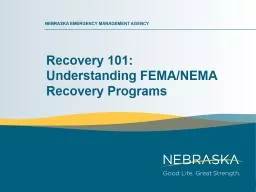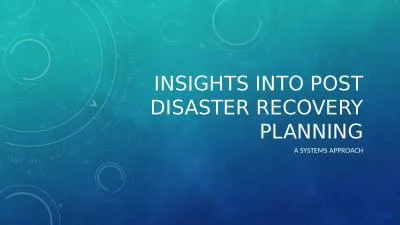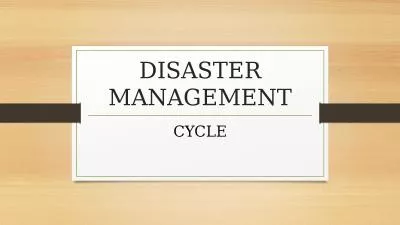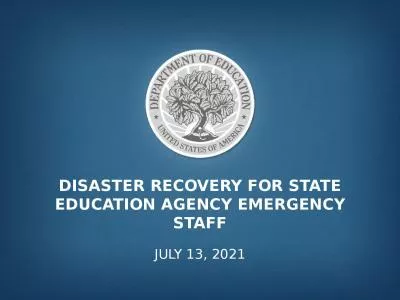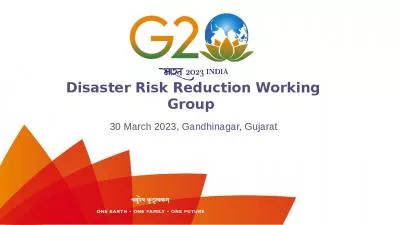PPT-Working with Indigenous communities in disaster recovery
Author : elysha | Published Date : 2024-03-13
We acknowledge the First Peoples of Australia and their ongoing strength in practising the worlds oldest living culture We acknowledge the Traditional Owners who
Presentation Embed Code
Download Presentation
Download Presentation The PPT/PDF document "Working with Indigenous communities in d..." is the property of its rightful owner. Permission is granted to download and print the materials on this website for personal, non-commercial use only, and to display it on your personal computer provided you do not modify the materials and that you retain all copyright notices contained in the materials. By downloading content from our website, you accept the terms of this agreement.
Working with Indigenous communities in disaster recovery: Transcript
Download Rules Of Document
"Working with Indigenous communities in disaster recovery"The content belongs to its owner. You may download and print it for personal use, without modification, and keep all copyright notices. By downloading, you agree to these terms.
Related Documents

